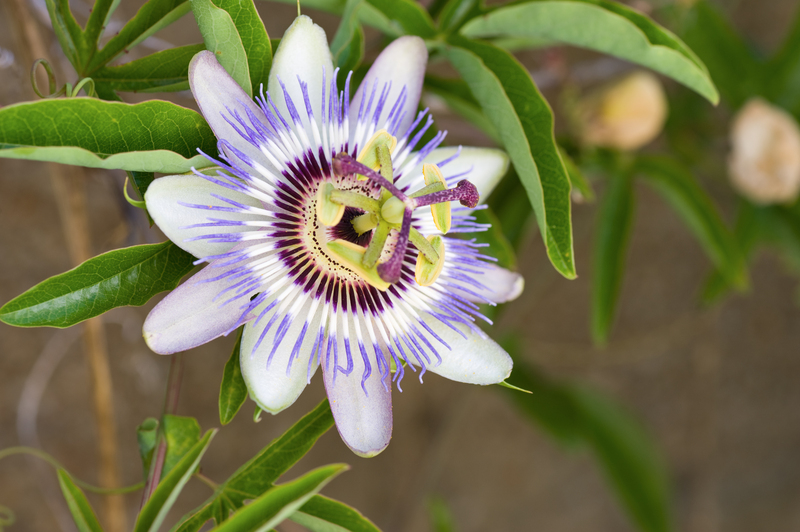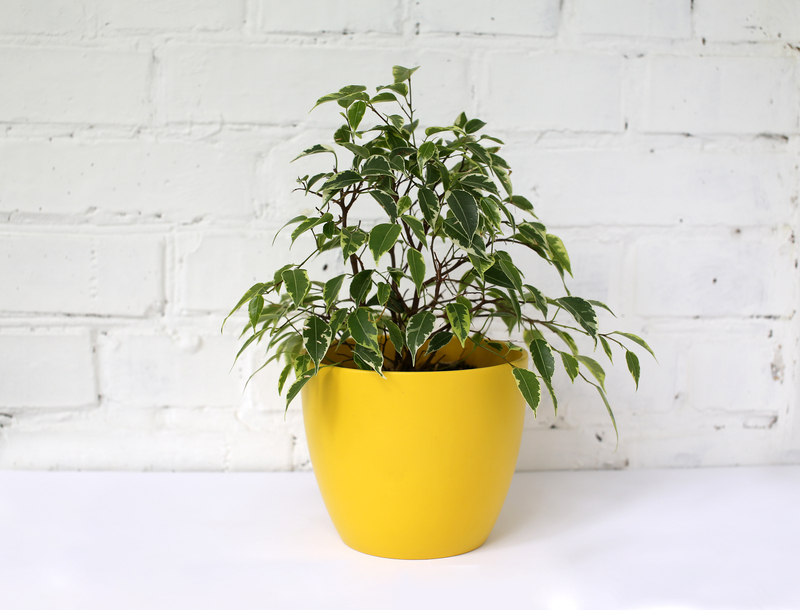Plants With a Tropical Flair That Suit the UK Weather
Dreaming of bringing a lush, exotic touch to your UK garden? Plants with a tropical flair can transform even the most traditional British garden into an oasis that evokes memories of distant shores. Although the UK climate is typically mild and moist, it is possible to enjoy tropical-looking plants without needing a glasshouse or heated conservatory. In this comprehensive guide, we delve into the best tropical-style plants that thrive in the UK weather, how to grow them, and tips for creating that vibrant, jungly effect in your own outdoor space.

Understanding the UK Climate: What Makes Plants Thrive?
Before diving into the plant list, it's essential to understand the conditions most gardens in the UK offer:
- Mild winters (most areas, with occasional frost in colder regions)
- High humidity and moderate rainfall
- Cool summers with limited very hot days
- Variable sunlight - bright in summer, dimmer and shorter in winter
With the right knowledge and a carefully selected list of plants, you can create a tropical atmosphere that flourishes, even when the British weather is less than balmy. Below are some of the top picks for tropical flair plants that suit the UK climate.
Top Plants With a Tropical Flair for UK Gardens
1. Trachycarpus fortunei (Chusan Palm / Windmill Palm)
Often regarded as the ultimate hardy palm for the UK, Trachycarpus fortunei is a staple for any tropical-themed garden. Its fan-shaped leaves rise on slender, hairy trunks and instantly evoke a beachside, exotic look. It's one of the most cold-tolerant palms in the world, able to withstand temperatures down to -15?C, making it ideal for British winters.
- Position: Sheltered spot, protected from harsh wind
- Soil: Well-draining, moist
- Features: Grows up to 12m eventually, slow growing
2. Bamboo (Phyllostachys & Fargesia)
Bamboo, with its tall, swaying canes and fine leaves, screams tropical. Hardy varieties like Phyllostachys (running) and Fargesia (clumping) can grow in most UK gardens. Bamboos provide fantastic privacy or act as a dramatic backdrop for other bold-leaved tropical plants.
- Position: Partial shade or sun
- Soil: Humus-rich, moist but well-drained
- Tip: Opt for clumping varieties (Fargesia) for low maintenance; running bamboo needs root barriers
3. Fatsia japonica (Japanese Aralia / Paper Plant)
Few plants are as easy to grow as the Fatsia japonica. Its huge, glossy, lobed leaves add a real jungle effect, and it grows well in shade--perfect for those north-facing corners. It's hardy down to -10?C and works as a bold evergreen shrub for year-round structure.
- Position: Shade to partial sun
- Soil: Moist but well-drained, tolerant of most soils
- Features: White globe flowers in autumn
4. Tetrapanax papyrifer 'Rex' (Rice Paper Plant)
If you want drama, the Tetrapanax Rex delivers. Its immense, palmate leaves can reach over 1m across, giving real "wow factor." Frost hardy in most of the UK, it creates a lush canopy effect and adds remarkable texture to your jungle-style borders.
- Position: Sun to part shade, sheltered
- Soil: Fertile, moist but well-drained
- Features: Fast-growing, may sucker from roots
5. Banana Plants (Musa basjoo & Ensete ventricosum)
Who says you can't grow bananas in the UK? While edible fruit is rare, the ornamental Musa basjoo (hardy banana) survives down to -10?C with protection. Its huge, paddle-shaped leaves provide that unmistakably tropical vibe. The majestic Ensete ventricosum 'Maurelii' boasts red-tinged foliage for dramatic colour. Use as feature plants in pots or borders.
- Position: Full sun, shelter from wind
- Soil: Rich, moisture-retentive
- Care: Mulch crowns heavily in winter for protection
6. Canna Lilies (Canna spp.)
With their large, banana-like leaves and stunning fiery flowers, Cannas are essential for a tropical garden. Grow them in borders or as striking container displays. They thrive in the UK summer and overwinter indoors or mulched well outdoors in milder areas. Their bold leaves and vibrant blooms symbolize tropical abundance.
- Position: Sun, sheltered
- Soil: Moist, fertile
- Tip: Lift rhizomes after first frost in cold regions
7. Hedychium (Ginger Lilies)
Hedychium plants offer both tropical foliage and incredibly fragrant, showy flowers in late summer. Some varieties, like Hedychium coronarium and Hedychium densiflorum, are hardy in sheltered UK gardens. Perfect for filling that late summer tropical gap.
- Position: Full sun to light shade
- Soil: Rich, moist
- Features: Scented flowers, architectural foliage
8. Cordyline australis (Cabbage Palm)
A familiar sight in coastal gardens, Cordyline australis lends a palm-tree-like silhouette wherever it grows. Its spiky leaves come in green, purple, or variegated forms. It tolerates wind and salt, making it fantastic for exposed UK sites. This plant brings a modern, tropical accent to borders and patios.
- Position: Full sun, free-draining
- Soil: Adaptable, well-drained
- Care: In colder regions, fleece centre crown during harsh frosts
Creating a Tropical-Style Garden in the UK
Tropical Looks: It's All About Foliage
To achieve the tropical flair in your UK garden, focus on plants with large, bold leaves, contrasting textures, and lush, overlapping layers. Use palms, bamboos, bananas, and cannas as structural plants. Contrast them with ferns, hostas, and ornamental grasses for softness and variety.
Colour, Texture, and Layering
- Layering: Combine tall palms and bananas at the back, with medium plants like cannas and fatsia, and shade-lovers like hostas, ferns, or heucheras at the front.
- Colour: Add hot reds, flaming oranges, or sunshine yellows with Crocosmia, cannas, or dahlias.
- Texture: Mix spiky cordylines with round-leaved fatsia for dynamic drama.
Shelter and Microclimates
Many tropical foliage plants benefit from extra warmth and protection. Plant near sheltered walls, fences, or hedges to create microclimates, and avoid exposed, windy spots for delicate varieties. Urban gardens or inner city plots often provide ideal conditions.
Plants With Exotic Flair: More Hardy Options for Tropical UK Gardens
Beyond the core tropical favourites, experiment with these additional hardy exotics:
- Hosta - Large, ribbed leaves in blue, green or gold add a luscious, damp-corner lushness.
- Tree Fern (Dicksonia antarctica) - An impressive, ancient-looking fern for moist, shady corners (protect crowns in harsh winters).
- Melianthus major - Exotic, serrated blue-green leaves with honey-scented flowers; cut down in spring after frost.
- Eucomis (Pineapple Lily) - Quirky flower spikes and lush foliage for warm, sunny borders.
- Tropaeolum speciosum - The "flame flower", a stunning climber with red blooms ideal for scrambling through shrubs.
Essential Growing Tips for Exotic-Style Gardens in the UK
1. Prioritise Drainage and Feeding
Most tropical plants hate sitting in soggy soil. Amend planting areas with compost and horticultural grit for improved drainage, especially on clay soils. Feed regularly during the growing season for lush, fast growth.
2. Mulch and Protect for Winter Hardiness
Mulching around the base of palms, bananas, and tender perennials with bark, straw, or compost in late autumn insulates roots and crowns. In cold snaps, consider using horticultural fleece for extra protection, especially in northern or exposed regions.
3. Embrace Containers and Mobility
Pots allow you to experiment with less-hardy exotics, such as colocasias, alocasias, or even citrus trees. Group containers together for a heat "bubble" in summer and move them to a sheltered spot or indoors for winter.
4. Water Wisely
Many tropical plants enjoy moist, but never waterlogged, soil. Water deeply in dry spells during active growth (May-September). In winter, reduce watering, especially for container plants kept cool and dry.
5. Pruning and Tidying
Remove any damaged or dead leaves regularly to maintain the jungle look. Cut down herbaceous exotics like cannas and gingers after the first frost, and new shoots will appear in spring.
Design Ideas for a UK Tropical-Style Oasis
- Jungle Path: Create winding paths lined with leafy plants and tall, swaying bamboo for a "lost world" effect.
- Palm Patio: Cluster potted bananas, cordylines, and cannas for a sun-drenched, urban resort feel.
- Shady Refuge: Fill darker, damper spots with tree ferns, hostas, fatsias, and ferns for an atmospheric, mossy canopy effect.
- Tropical Pond: Add hardy aquatic plants like Colocasia esculenta (taro) and water lilies for a steamy, lagoon feel.

Common Questions About Tropical-Looking Plants in the UK
- Can I leave tropical-style plants outdoors year-round?
- Most hardy exotics can stay outdoors if mulched or protected, but check hardiness for each variety. Move tender or borderline-hardy plants under cover before frosts hit.
- Which tropical plants are best for pots?
- Bananas, cannas, alocasias, colocasias, and citrus are all striking choices for containers in UK gardens.
- How long will it take to create a tropical effect?
- With fast-growing plants like bamboos, cannas, and bananas, you can see a dramatic effect in as little as one or two summers.
Conclusion: Bringing Tropical Style to UK Gardens
With growing climate adaptability, plant science, and a little creative flair, UK gardeners can successfully cultivate vibrant, exotic-looking spaces that evoke the lushness of the tropics. By selecting the best plants with a tropical flair that suit UK weather, utilising clever design and practical care, your plot--no matter the size--can become a leafy paradise to enjoy for many seasons to come.
Ready to transform your garden? Bold textures, lavish leaves, and striking silhouettes await--try incorporating some of these hardy tropical plants and enjoy the exotic effect, come rain or shine!